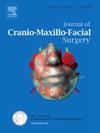Comparative analysis of cell morphology in patient-paired primary human osteoblasts from the jaw and the fibula
IF 2.1
2区 医学
Q2 DENTISTRY, ORAL SURGERY & MEDICINE
引用次数: 0
Abstract
Previous studies hint at possible differences in osteogenic, osteoimmunologic, and angiogenetic potential among primary human osteoblasts (HOBs) from different origins (iliac and alveolar bone) within the same patient. In this study, HOBs from the jaw and the fibula were investigated for the first time to gain further knowledge about the similarities and differences on the cellular morphological level.
Patient-paired HOB cultures from the jaw and fibula of 14 patients (60.3 ± 11.1 years; male: 9; female: 5) were isolated and further processed. Cells were stained with Calcein and Hoechst 33342, and single-cell morphometric shape analysis was performed. For each osteoblast, the shape descriptors area, length, width, aspect ratio, circularity, roundness, and solidity were determined. A site-specific and a gender-specific comparison were conducted.
None of the shape descriptors showed any significant differences between HOBs derived from the jaw and the fibula. The same applied to the gender-specific comparison between osteoblasts from female and male patients. Significant correlations between shape descriptors were found.
HOBs from both bones possess a comparable cell shape, which might positively influence the ossification between the recipient and the donor bone. Since cell morphology often reflects cell function, both bones might exhibit comparable osteoblast behavior, adding to the favorable outcomes observed with free fibula flaps in reconstructive surgery.
颌骨与腓骨患者配对的人原代成骨细胞细胞形态的比较分析。
先前的研究提示,同一患者体内不同来源(髂骨和牙槽骨)的人成骨细胞(HOBs)在成骨、骨免疫和血管生成潜能方面可能存在差异。本研究首次对来自颌骨和腓骨的HOBs进行了研究,以进一步了解它们在细胞形态学水平上的异同。14例患者(60.3±11.1岁)颌骨和腓骨HOB配对培养;男:9;雌性:5)分离并进一步加工。细胞用钙素和Hoechst 33342染色,进行单细胞形态分析。对于每个成骨细胞,确定形状描述符的面积、长度、宽度、长宽比、圆度、圆度和固体度。进行了特定地点和特定性别的比较。没有任何形状描述符显示来自颌骨和腓骨的滚刀之间有任何显著差异。这同样适用于女性和男性患者成骨细胞的性别特异性比较。形状描述符之间存在显著的相关性。来自两种骨的HOBs具有相似的细胞形状,这可能对受体骨和供体骨之间的骨化产生积极影响。由于细胞形态通常反映细胞功能,两种骨可能表现出相似的成骨细胞行为,增加了在重建手术中观察到的游离腓骨瓣的良好结果。
本文章由计算机程序翻译,如有差异,请以英文原文为准。
求助全文
约1分钟内获得全文
求助全文
来源期刊
CiteScore
5.20
自引率
22.60%
发文量
117
审稿时长
70 days
期刊介绍:
The Journal of Cranio-Maxillofacial Surgery publishes articles covering all aspects of surgery of the head, face and jaw. Specific topics covered recently have included:
• Distraction osteogenesis
• Synthetic bone substitutes
• Fibroblast growth factors
• Fetal wound healing
• Skull base surgery
• Computer-assisted surgery
• Vascularized bone grafts

 求助内容:
求助内容: 应助结果提醒方式:
应助结果提醒方式:


